Discover the sights and sounds of beautiful Barcelona
La Rambla
La Rambla is an iconic and busy street in central Barcelona, popular with both tourists and locals alike. A 1.2 kilometer-long tree-lined pedestrian mall in the Barri Gòtic, it connects Plaça Catalunya in the center with the Christopher Columbus monument at Port Vell. Usually full of street theatre, cafés and market stalls, it serves as the emotional hub of Barcelona.
La Rambla can be considered a series of shorter streets, each differently named, hence the plural forms Las Ramblas (Spanish and les Rambles (Catalan).
When walking down La Rambla one can visit its many small shops or enjoy watching the various performances (actors, mimes etc.). Cafes and restaurants on La Rambla often charge steep prices.
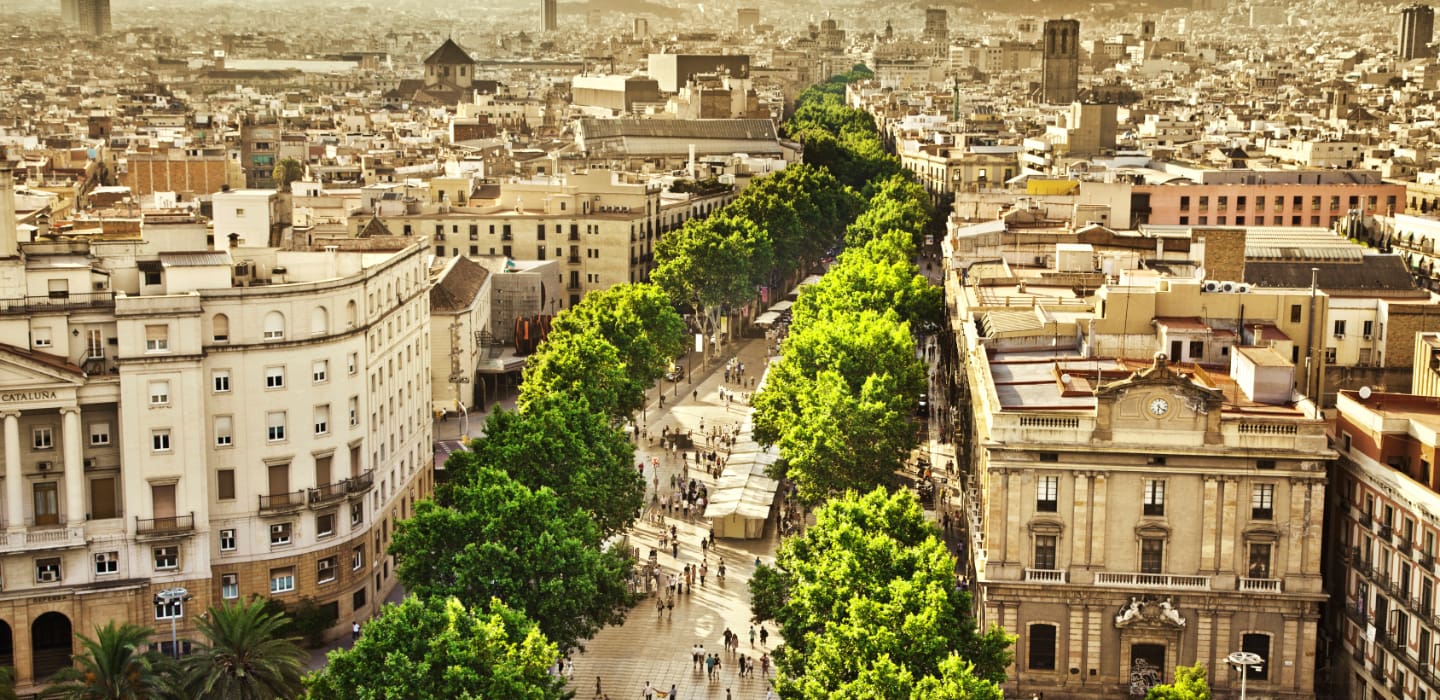

Cathedral
The Gothic Cathedral is located in the heart of the old town.It was constructed throughout the 13th to 15th centuries and is a focal point of interest in the Gothic quarter.
The cathedral is dedicateded to Eulalila of Barcelona, saint of Barcelona, a young virgin who suffered martyrdom during Roman times in the city.
Around the Cathedral you can find many fine examples of Gothic architecture and Roman walls.In front of the Cathedral is a small square where street performers take place. The area around the Cathedral has a charm with cafes and interesting shops.
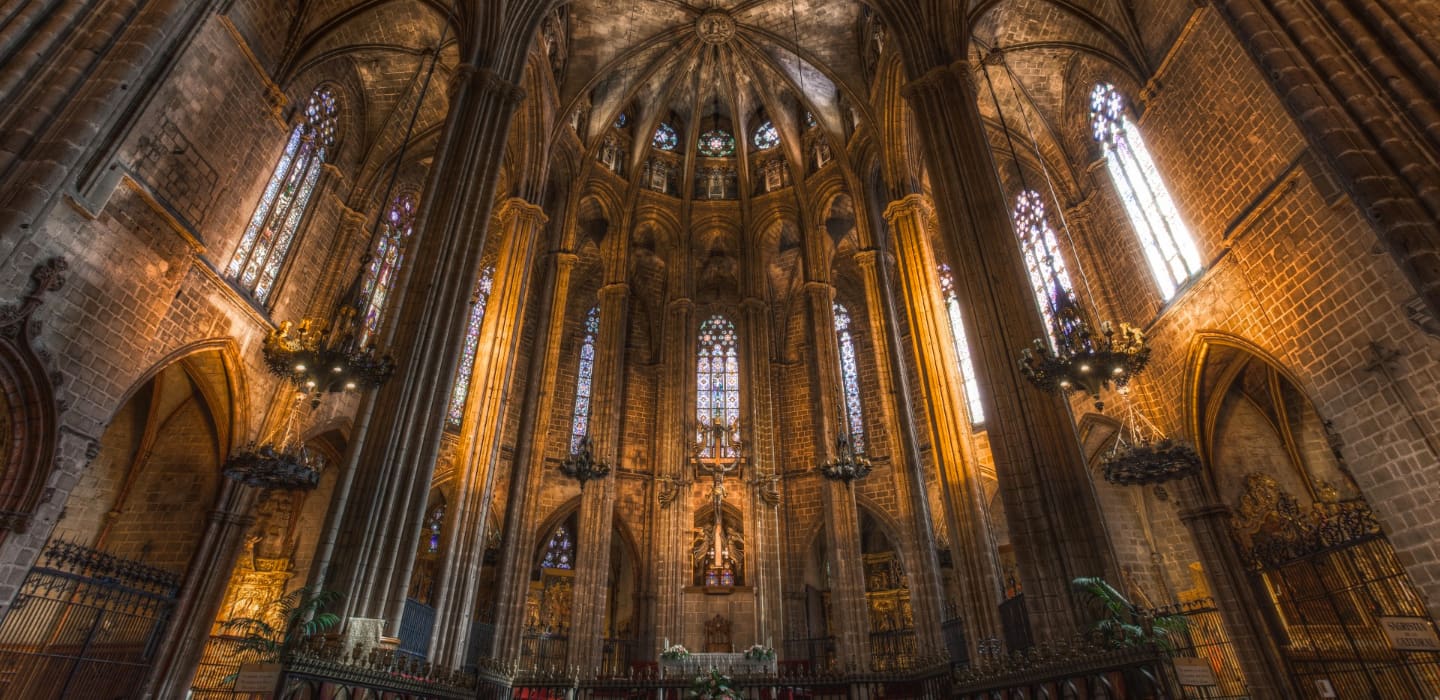

Tibidabo
Tibidabo is a mountain overlooking Barcelona, Catalonia, Spain. At 512 meters it is the tallest mountain in the Serra de Collserola. Rising sharply to the north-west, it affords spectacular views over the city and the surrounding coastline.
There is an amusement park, a telecommunications tower (Torre de Collserola), and a Catholic church, the Temple de Sagrat Cor, at the top, all of which are visible from most of the city. Designed by Enric Sagnier, the church took 60 years to construct and is topped by a sculpture of the Sacred Heart by Josep Miret Llopart. The Amusement park is the oldest in Barcelona and retains most of the original rides, some of which date to the turn of the 20th century. Tibidabo (512m) is the highest hill in the wooded range that forms the backdrop to Barcelona. It’s great for the fresh air and on a good day you can see inland as far as Montserrat. Tibidabo gets its name from the devil, who, trying to tempt Christ, took him to a high place and said, in Latin: « Haec omnia tibi dabo si cadens adoraberis me » (« All this I will give you if you fall down and worship me »).
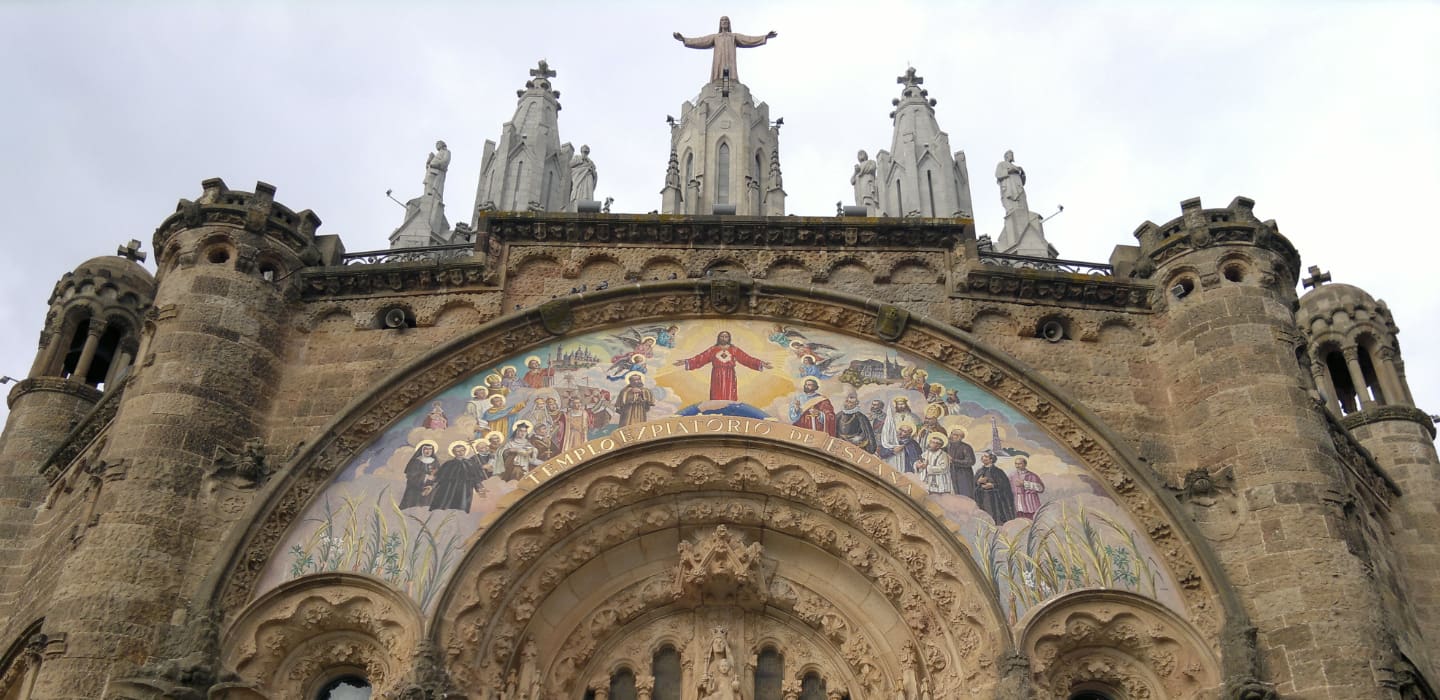

Sagrada Familia
The Sagrada Família, is a massive Roman Catholic Church. Its construction began in 1882 and continues to this day.
Originally designed by Antoni Gaudí (1852 – 1926), who worked on the project for over 40 years, devoting the last 15 years of his life entirely to the endeavor, the project is scheduled to be completed in 2026.
On the subject of the extremely long construction period, Gaudí is said to have remarked, “My client is not in a hurry.” After Gaudí’s death in 1926, work continued under the direction of Domènech Sugranyes until interrupted by the Spanish Civil War in 1936.
La Sagrada Familia inspires awe by its sheer vertically and, in the true manner of the great medieval cathedrals it emulates, it’s still under construction after more than 100 years. It is the most visited monument in Spain.


Park Güell
Park Güell is a garden complex with architectural elements situated on the hill of el Carmel in the Gràcia district of Barcelona, Catalonia. It was designed by the Catalan architect Antoni Gaudí and built in the years 1900 to 1914. It is part of the UNESCO World Heritage Site “Works of Antoni Gaudí”.
The buildings flanking the entrance, though very original and remarkable with fantastically shaped roofs with unusual pinnacles, fit in well with the use of the park as pleasure gardens and seem relatively inconspicuous in the landscape when one considers the flamboyance of other buildings designed by Gaudí.
It’s a strange, enchanting place where his passion for natural forms really took flight to the point where the artificial almost seems more natural than the natural.


Montjuic
Montjuїc, or the “ Hill of the Jews”, is thought to have derived its name from the old Catalan word “juїc” meaning Jewish. This refers to a Medieval Jewish cemetery that was once located here, and possibly also a Jewish settlement. Montjuїc is a favourite weekend destination for Barcelona residents as well as for many tourists.
The Olympic stadium, located towards the top of Montjuїc, is home to the Espanyol football team. Another important sports area is the Piscina Bernat Picornell Olympic swimming pool. Both the indoor and outdoor pools are huge and are open to the public.
Montjuїc’s museums include the Catalunya National Art Museum, the Caixa Forum, Archaeology Museum and Miró Foundation, and its parks and gardens are no less impressive.
Montjuïc, overlooking the city centre from the southwest, may only be a hill in dimension, but it’s a mountain of activity..
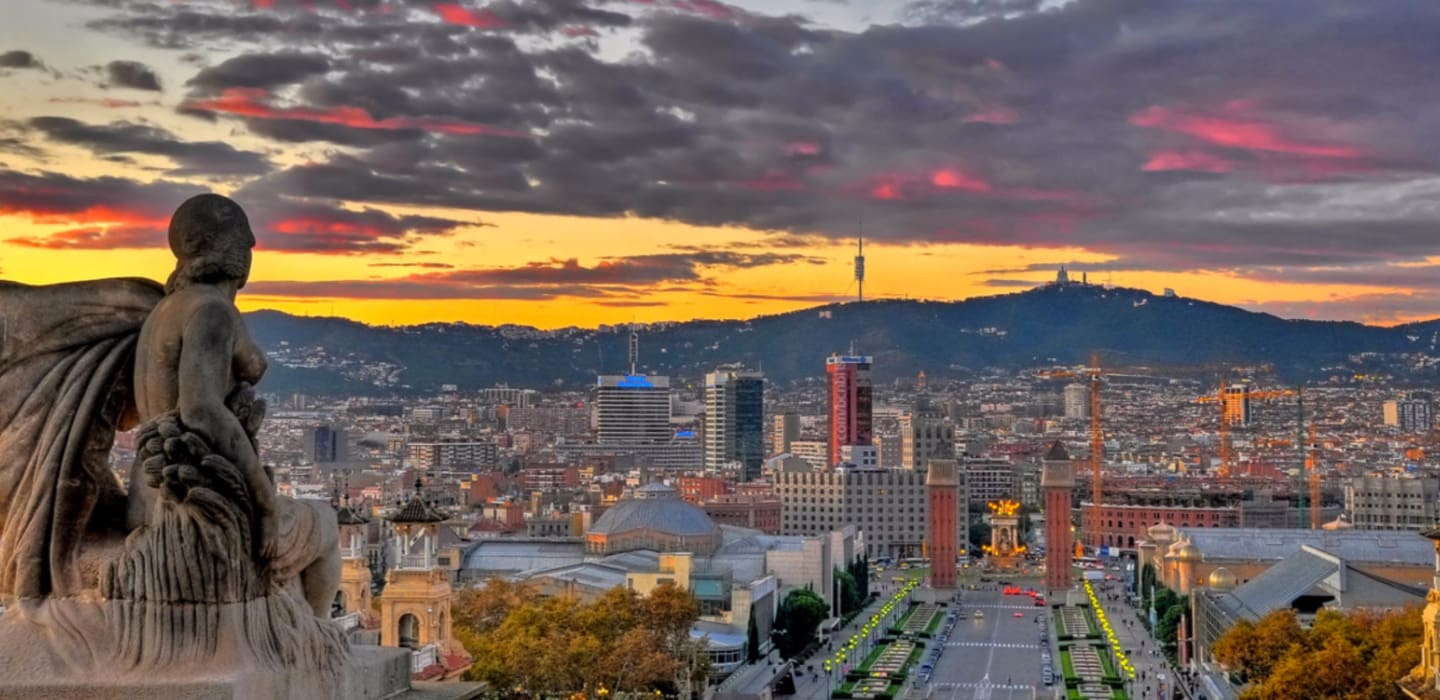

La Boqueria
The Mercat de Sant Josep de la Boqueria is a large public market in the Ciutat Vella. It is the city’s foremost tourist landmarks and attracks both locals and tourists. It´s well located with an entrance from La Rambla. The market has a very diverse selection of fresh food as fruits, vegetables, dry fruits, fishes, meat, and much more…
But not only fresh food, The Mercat de Sant Josep de la Boqueria is known for its small restaurants and the tapas bars which offers typical Spanish and Catalan snacks to eat standing up.
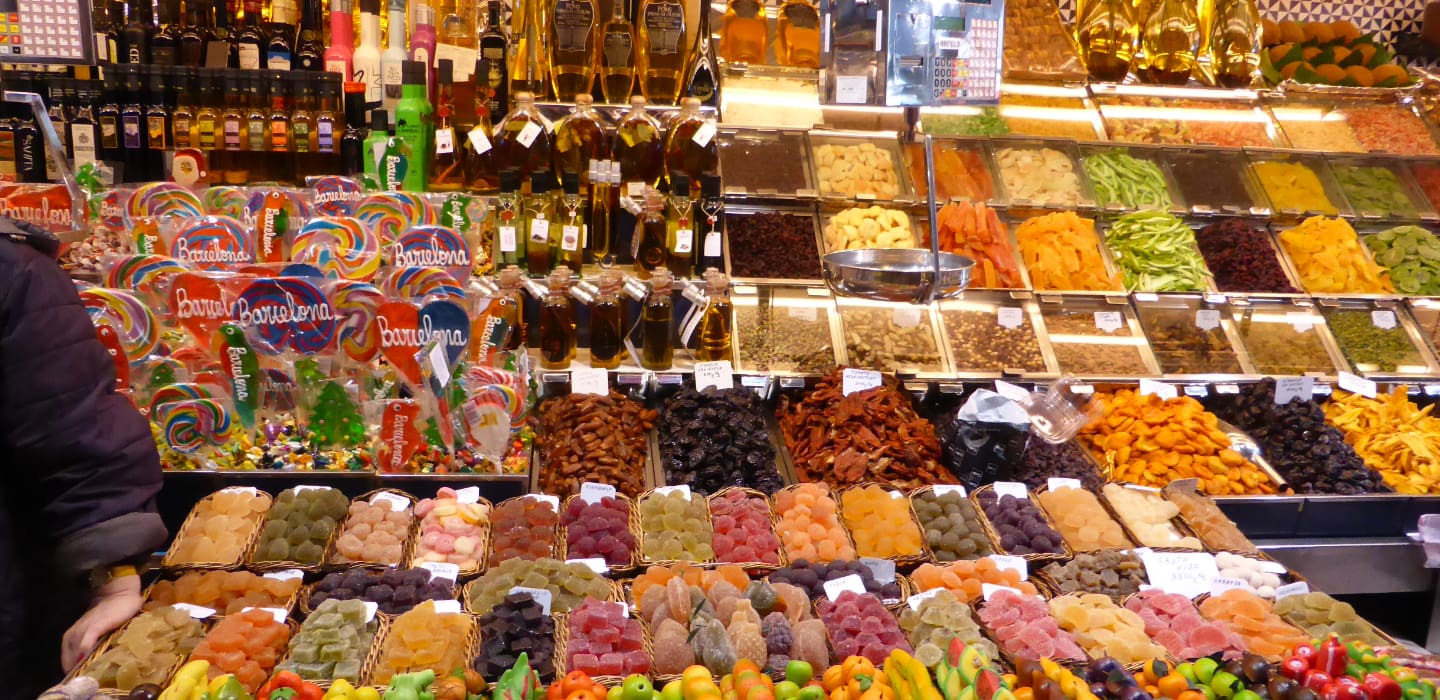

Barri Gotic
The Barri Gotic can be easily recognised as the oldest and most historic part of the city, with its medieval buildings and labyrinthine narrow roads. From the 4th Century until the middle of the 19th century it was entirely enclosed by strong Roman walls and fortifications.
Perhaps one of the most typical parts of the Gothic district, and certainly the least recommendable to explore by night, is around Plaça Reial. The Plaça itself is always bustling with tourists, party-loving residents and random weirdos, attracted by the many bars and clubs that line its perimeter.
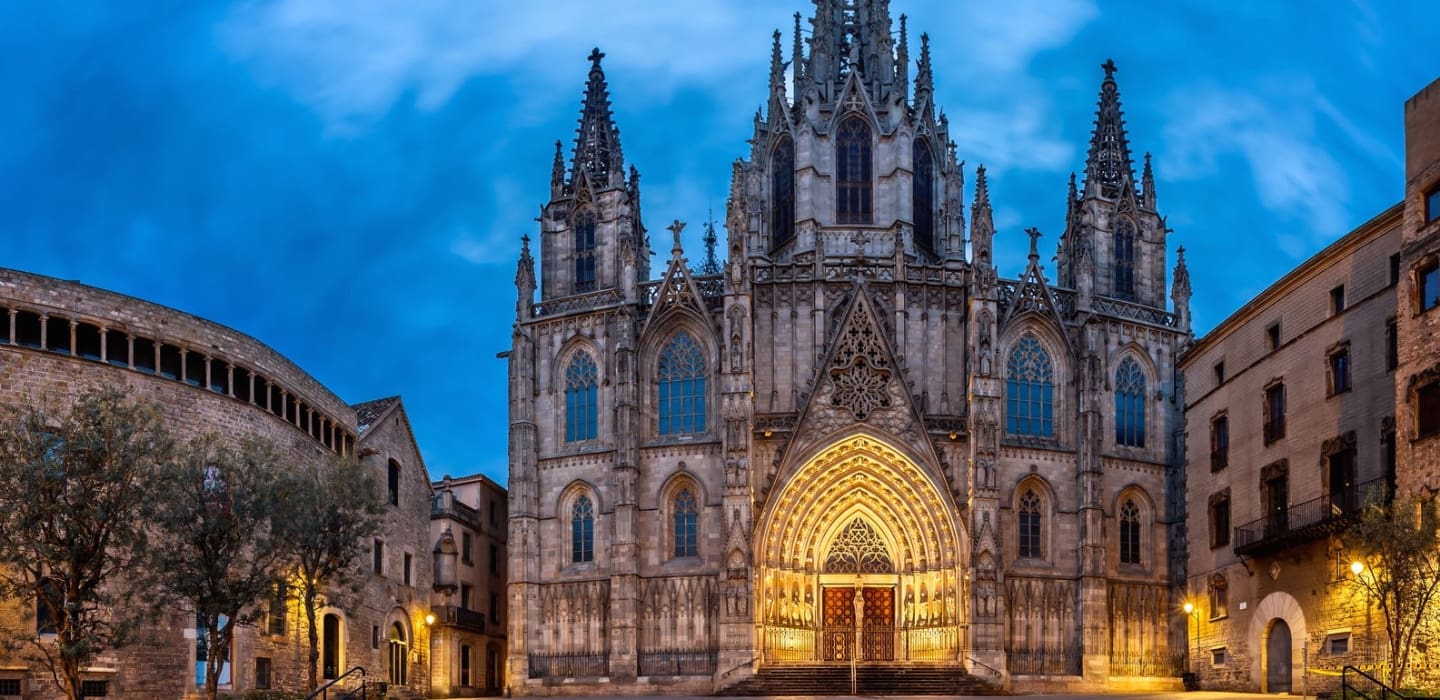

Santa Maria del Mar
Santa Maria del Mar is an imposing church in the Ribera district of Barcelona. The church was built between 1329 and 1383. It is a remarkable example of Catalan Gothic with purity and unity of style. The church is the only complete Catalan Gothic church with its Catalan Gothic features’s façades. It is very different from those of European Gothic.
Inside the church there is an exceptional acoustics which make it an ideal place for concerts of classical music, jazz or music from Oriental countries.
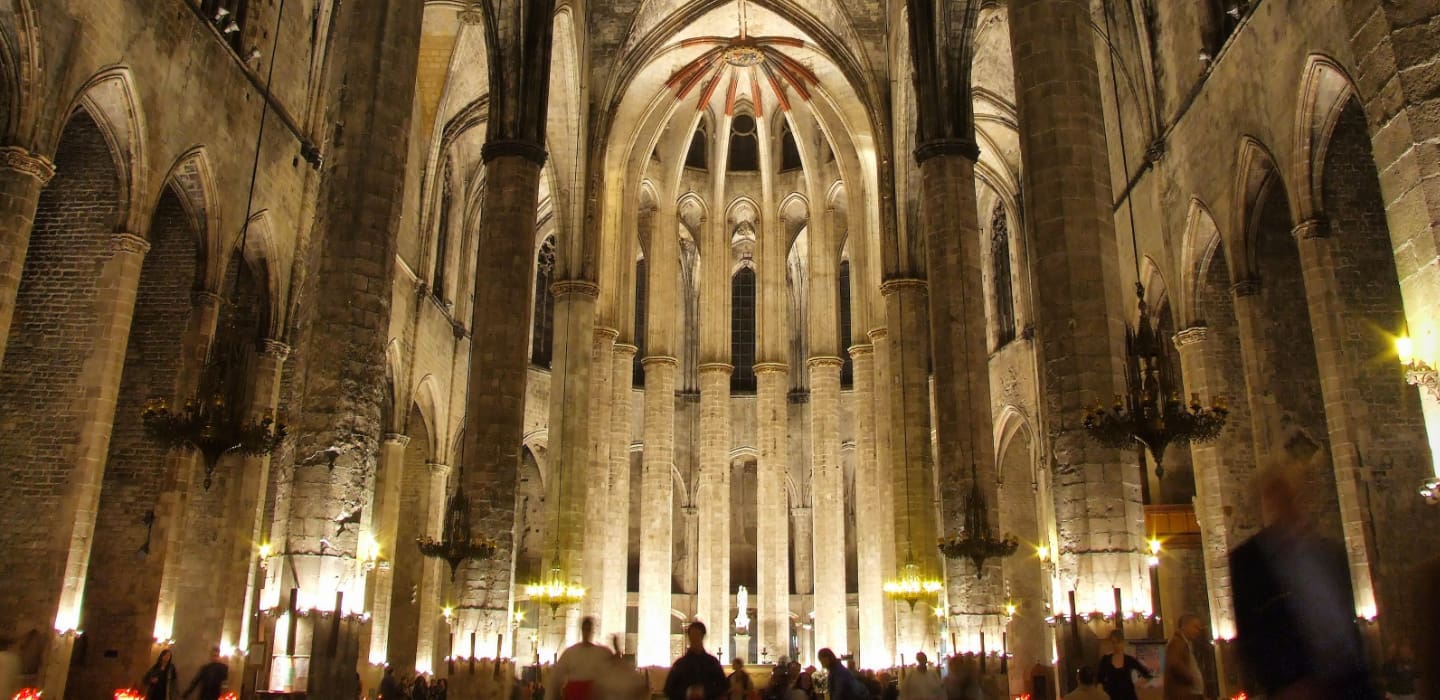

Colonia Güell
‘La Iglesia de la Colònia Güell’ is a church located in Colònia Güell. It is also known as the Gaudi Crypt. The church was designed by Antonio Gaudí in 1890 on the initiative of Eusebi Güell, a businessman. He also moved his textile busines from Sants to the municipality of Santa Coloma de Cervelló. (Colònia Güell)
At the Crypt Gaudí experimented many architectural solutions before designing the Sagrada Familia.


Port Olimpic
Which used to be an area full of disused factories and workshops has gone through a profound change as a result of the Olympic Games in 1992 in which it was the site of the sailing competitions. Next to this new Marina you can find a beautiful beach of 4 km length. The area offers many restaurants, cafes and the Gran Casino where you can try your luck.
Here you can find the party goers all year round. At sea level you will find an array of clubs and bars at exceedingly expensive prices, yet always buzzing.
Port Olimpic was built for the 1992 Olympic sailing events and is now a classy marina surrounded by bars and restaurants.
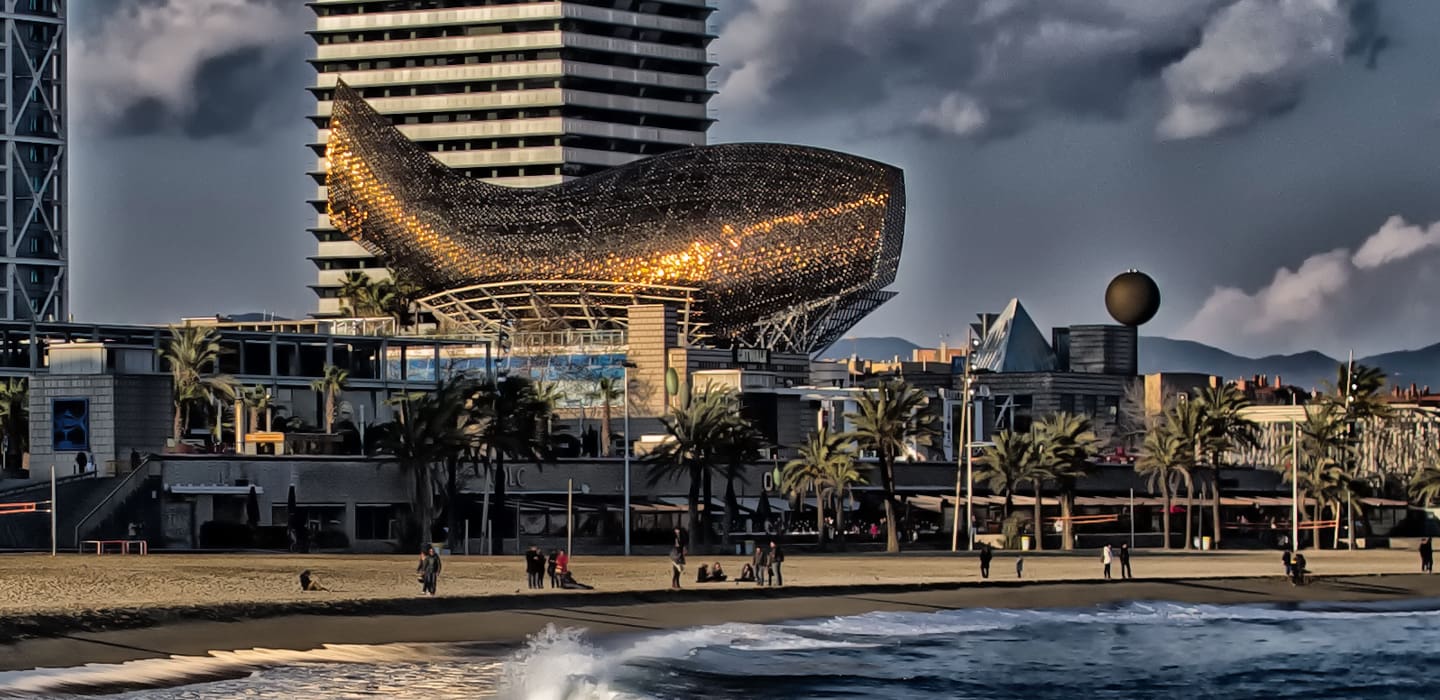

Torre Agbar
The Torre Agbar, or Agbar Tower, is a 21st-century skyscraper at Plaça de les Glòries Catalanes, Barcelona, Catalonia, Spain. It was designed by French architect Jean Nouvel and built by Dragados. It opened in June 2005 and was inaugurated officially by the King of Spain on 16 September 2005.
According to Nouvel, the shape of the Torre Agbar was inspired by the mountains of Montserrat that surround Barcelona, and by the shape of a geyser of water rising into the air.
Its design combines a number of different architectural concepts, resulting in a striking structure built with reinforced concrete, covered with a facade of glass, and over 4,500 window openings cut out of the structural concrete. The building stands out in Barcelona; it is the third tallest building in Barcelona.
Barcelona’s very own cucumber-shaped tower, Jean Nouvel’s luminous Torre Agbar (the city water company’s headquarter) is the most daring addition to Barcelona’s skyline since the first towers of the Sagrada Familia went up.
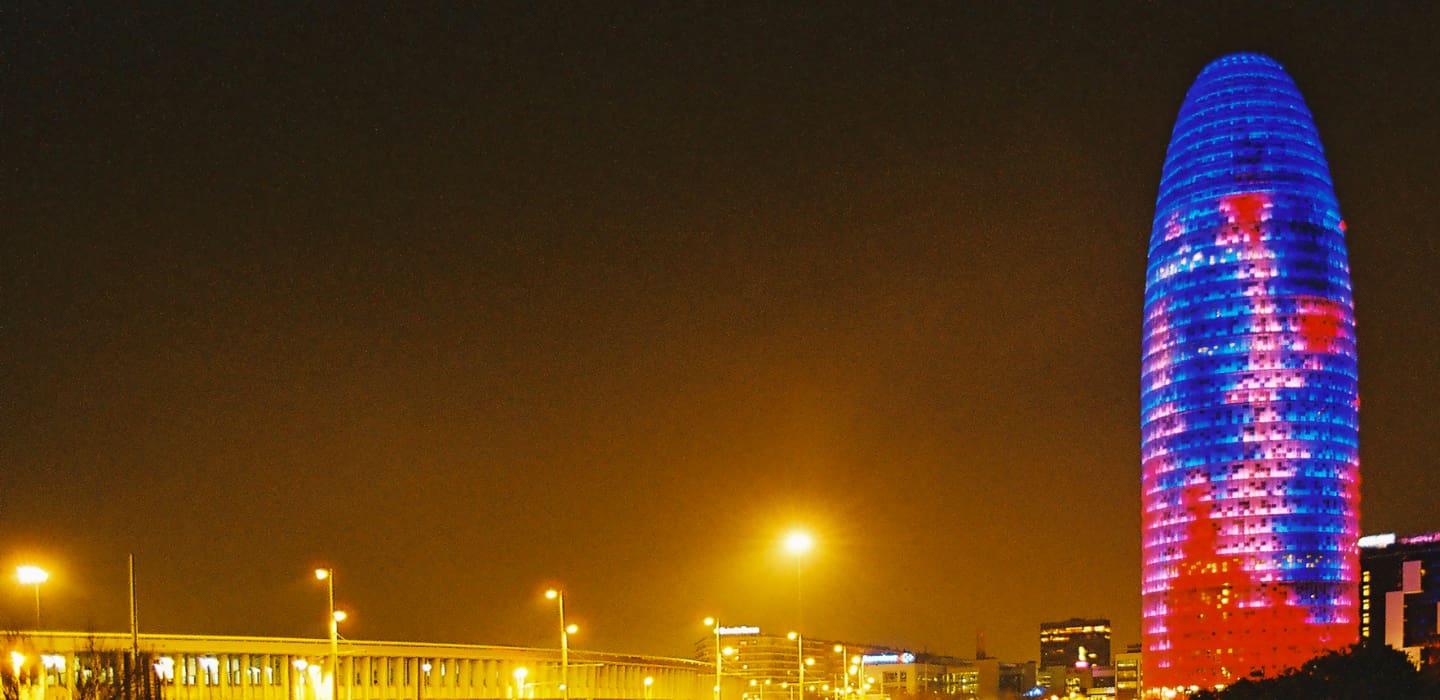

Parc de la Ciutadella
The Park de la Ciutadella is the most central park in Barcelona. It´s not a simple park, this one includes a zoo, a lake, a large fountain and several museums. The Catalan Parliament is located in a building at the center of the park.
You are invited to walk around the wide promenades, and admire colorful flowerbeds, many palm trees, sculptures and several interesting buildings. Come for a stroll, a picnic, a visit to the zoo or to inspect Catalonia’s regional parliament, but don’t miss a visit to this, the most central green lung in the city.
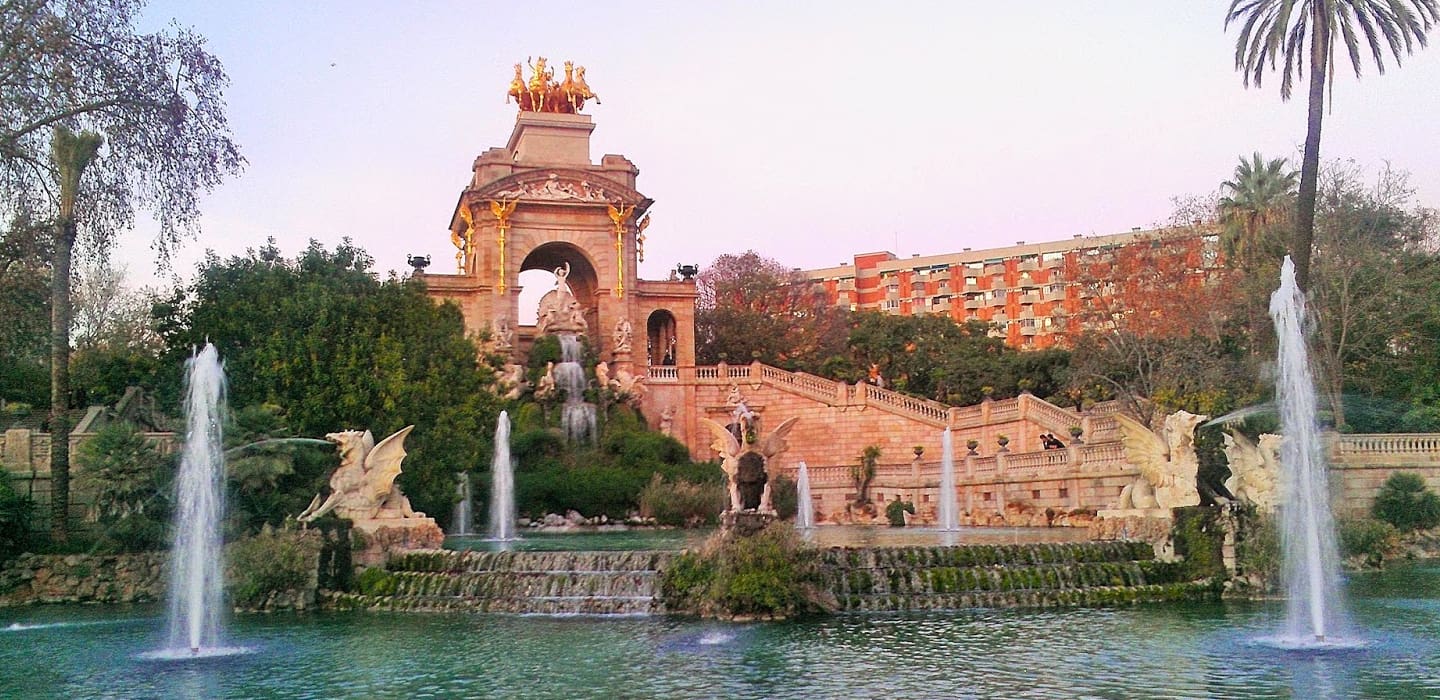

Forum
The International Forum of Cultures which was held in Barcelona between May and September of 2004 generated a huge amount of controversy, the cloud of which still lingers over the venue that kept the name of “Forum”.
The original event, the Forum of Cultures, was intended as a space for bringing together people of all nationalities through an extensive agenda of intellectual and artistic events. These included conferences, dialogues, exhibitions, music, and theatre performances. Defined by the three main themes of cultural diversity, sustainable development and conditions for peace, the Forum attracted over 3 million visitors in almost 5 months.
Concept and controversy aside, we take a look at the Forum site of today and what facilities are currently offered. The Forum site itself consists of indoor and outdoor spaces. Its Convention Centre can hold up to 3,500 people, whilst the Parc dels Auditori has a capacity of 8,000 people in the large auditorium and 3,000 in the smaller one. Industry specific World Congresses, seminars, and conferences also continue to take place here.
Since the closure of the international event in 2004, the Forum Commission have been developing the leisure facilities in an attempt to establish a reputation as a worthwhile destination for the city’s many visitors. Taking advantage of its seafront location, a supervised 2 hectare swimming area with shallow areas for swimmers, and kayak and canoe rental service is open during the summer from May to October. A “Reef Park” or “Parc dels Esculls” has also been set up.
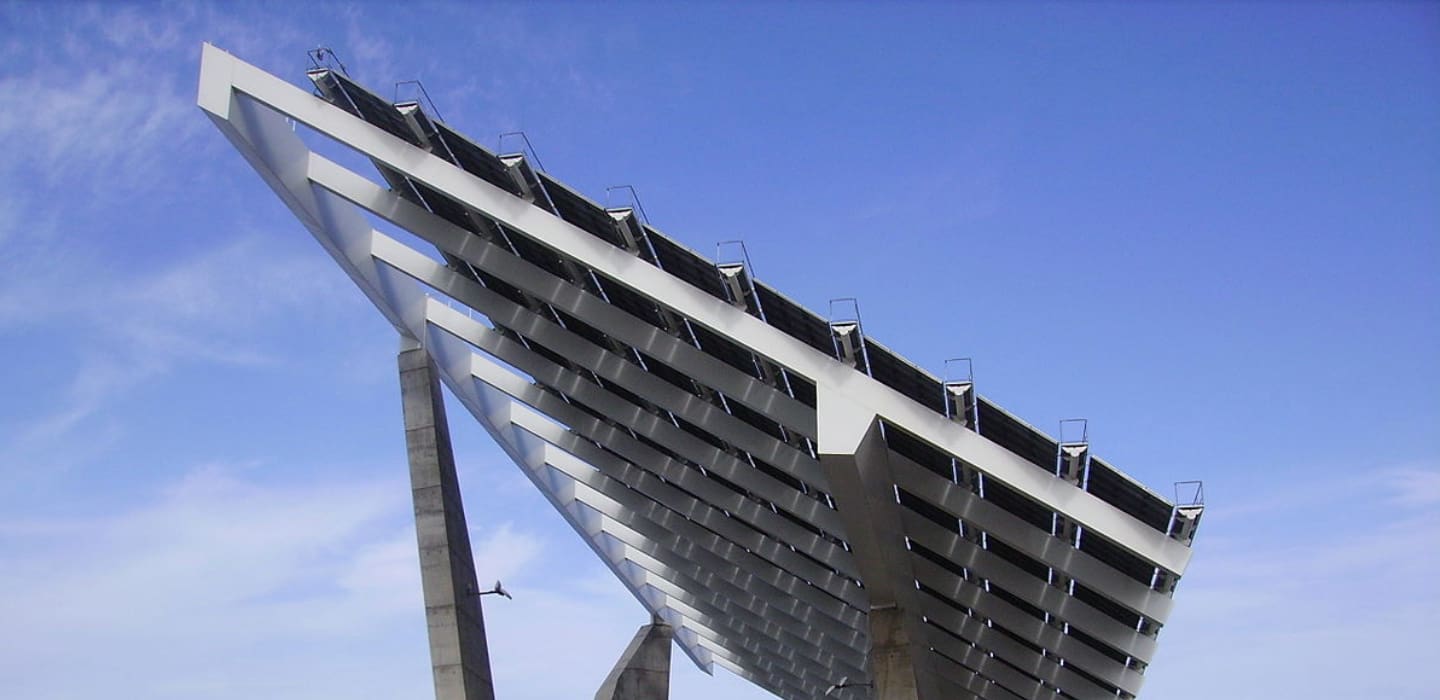

Palau Güell
This building, one of the most luxurious of Barcelona, was commissioned by Eusebi Güell i Bacigalupi (Count of Güell) to Antoni Gaudi who started the project around 1880 and signed it in 1886.
This palace that gets up close to the Ramblas.
The family Güell lived in this house from 1888, some of the receptions and other protocol activities of the 1888 Universal Exhibition in Barcelona, taking place in its living rooms.
The palace was the Güell residence, although the center of the city has left transferring during these years to the Passeig de Gracia and the new urban areas, until in 1910 the count abandons the building to live in a house he acquired inside the enclosure of the Park Guëll in the high part of Barcelona, project that Gaudí also carried out for him at that time.
The Palau Güell was declared by the UNESCO a Human Heritage in the year 1986.
This palace residence of the Güell family, was built with the biggest quality materials, basically in stone recovered with marble and decorated with the most delicate furniture and artistic objects. The exterior shows a main facade with a very sober aspect, built in stone of clear gray color coming from the count’s quarries in Garraf – to about 30 kilometers from the south of Barcelona -. Their two doors located in the center – with the owner initials E and G in wrought iron in their superior part – they also present among them a shield of Catalonia in wrought iron. The interior surprises for it splendid decoration with lots of elements of luxurious aspect reflecting the good taste and the architect’s originality at the same time – Gaudí designed diverse elements of the furniture, the illumination and the windows – and the building owners, even in a time with a much more pompous aesthetics that the considered acceptable today. The luxurious decoration includes marble columns, roofs covered with beautiful wood, furniture and marquetry. The most interesting piece is the surprising central living room crowned by a parabolic dome surpassing the roof in conic form. The ceiling of that lounge is perforated by circles that, under the daylight, give it, from the interior, a planetarium appearance. We also find in this room a small chapel embedded in the wall and a numberless of ornamental elements. The whole building is organized around this central piece.
The roof with its chimneys and conical vents remembering small fir trees, probably represents one of the first sketches – but already the work of a great master .
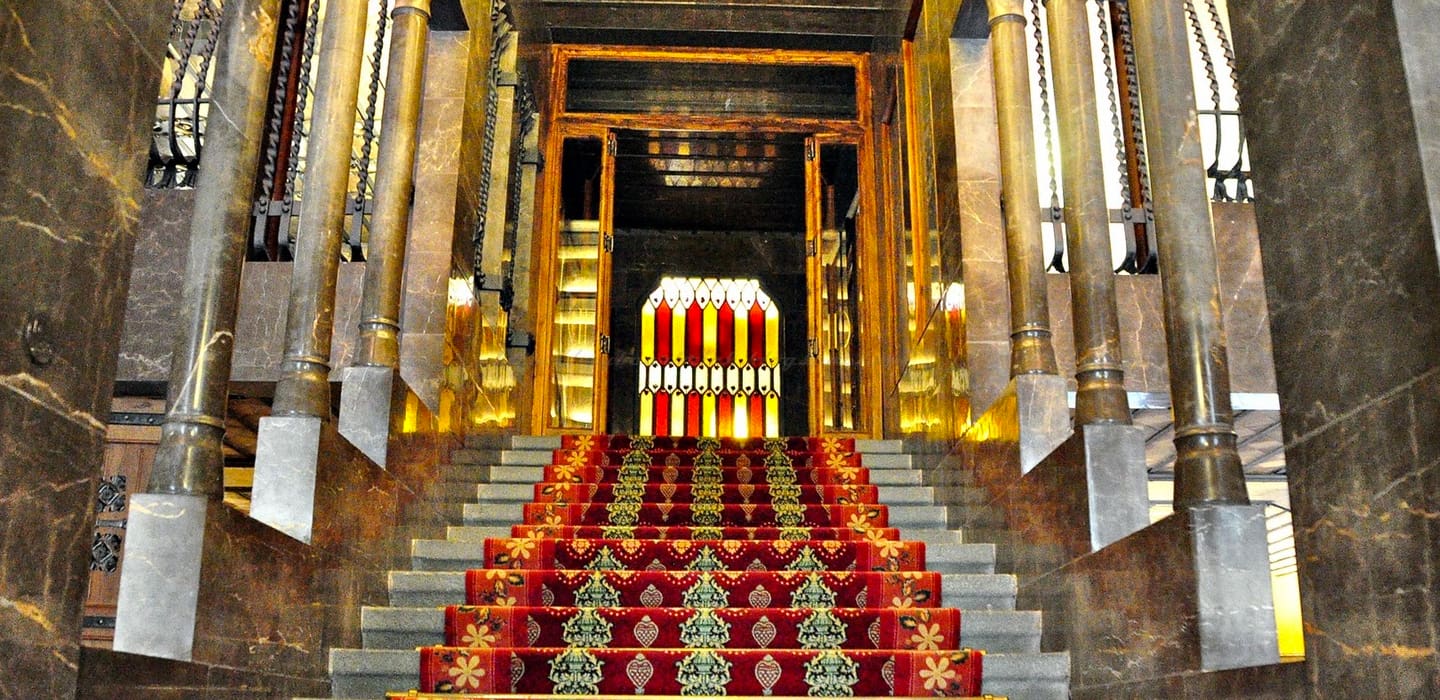

Gran Teatre del Liceu
It is an opera house on La Rambla. The Liceu opened on April 4, 1847. It is one of the world’s finest and biggest stage and acoustic settings for opera, and one of the most important opera houses in Spain.
You may not be able to catch a night at the opera, but you can still have a look around one of the Europe’s greatest opera houses, known to locals simply as the Liceu. It can seat up to 2300 people in its grand horseshoe auditorium.
Barcelona’s grand old opera house, restored after a fire in 1994 (first constructed in 1847), is one of the most technologically advanced theaters in the world. As well as opera, you can see world-class dance companies strut their stuff or attend classical-music concerts and recitals.
Tickets can cost anything from 7,50€ for a cheap seat behind a pillar to 150€ for a well-positioned night a the opera. You will need to book well in advance for the big shows.


Casa Battló
Casa Batlló is a building restored by Antoni Gaudí and Josep Maria Jujol, built in the year 1877 and remodelled in the years 1905–1907. The local name for the building is Casa dels ossos (House of Bones), and indeed it does have a visceral, skeletal organic quality. It was originally designed for a middle-class family and situated in a prosperous district of Barcelona. The building looks very remarkable — like everything Gaudí designed, only identifiable as Modernisme or Art Nouveau in the broadest sense. The ground floor, in particular, is rather astonishing with tracery, irregular oval windows and flowing sculpted stone work
The buildings flanking the entrance, though very original and remarkable with fantastically shaped roofs with unusual pinnacles, fit in well with the use of the park as pleasure gardens and seem relatively inconspicuous in the landscape when one considers the flamboyance of other buildings designed by Gaudí.
It’s a strange, enchanting place where his passion for natural forms really took flight to the point where the artificial almost seems more natural than the natural.
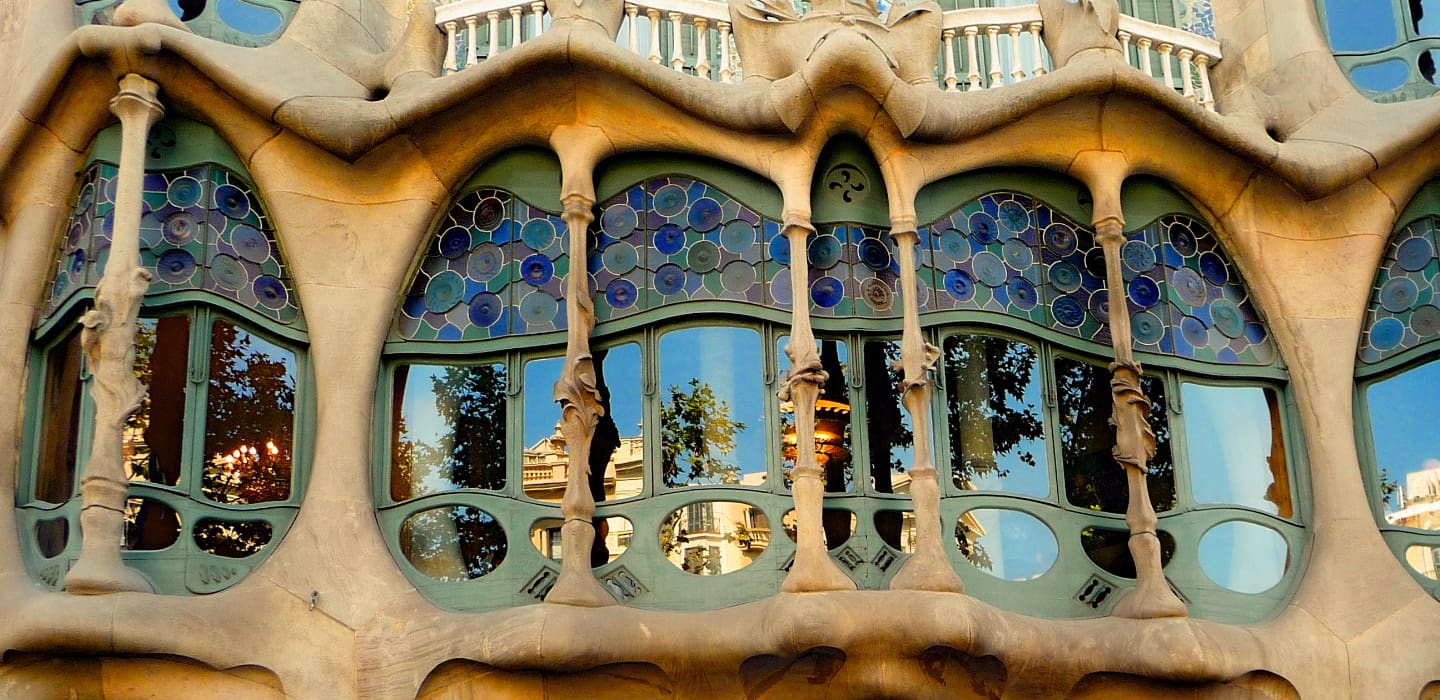

La Font Mágica
The Montjuïc has its nocturnal side too, with the engaging La Font Màgica.
With a flourish, the Magic Fountain erupts into a feast of musical, backlit liquid life.
It is extraordinary how an idea that was cooked up for the 1929 Exposition has, since the 1992 Olympics, again become a magnet. On hot summer evenings especially, this 15-minute spectacle (repeted several times through the evening) mesmerises onlookers. La Font Magica is a unique performance in which the water at times looks like seething fireworks or a mystical cauldron of color.
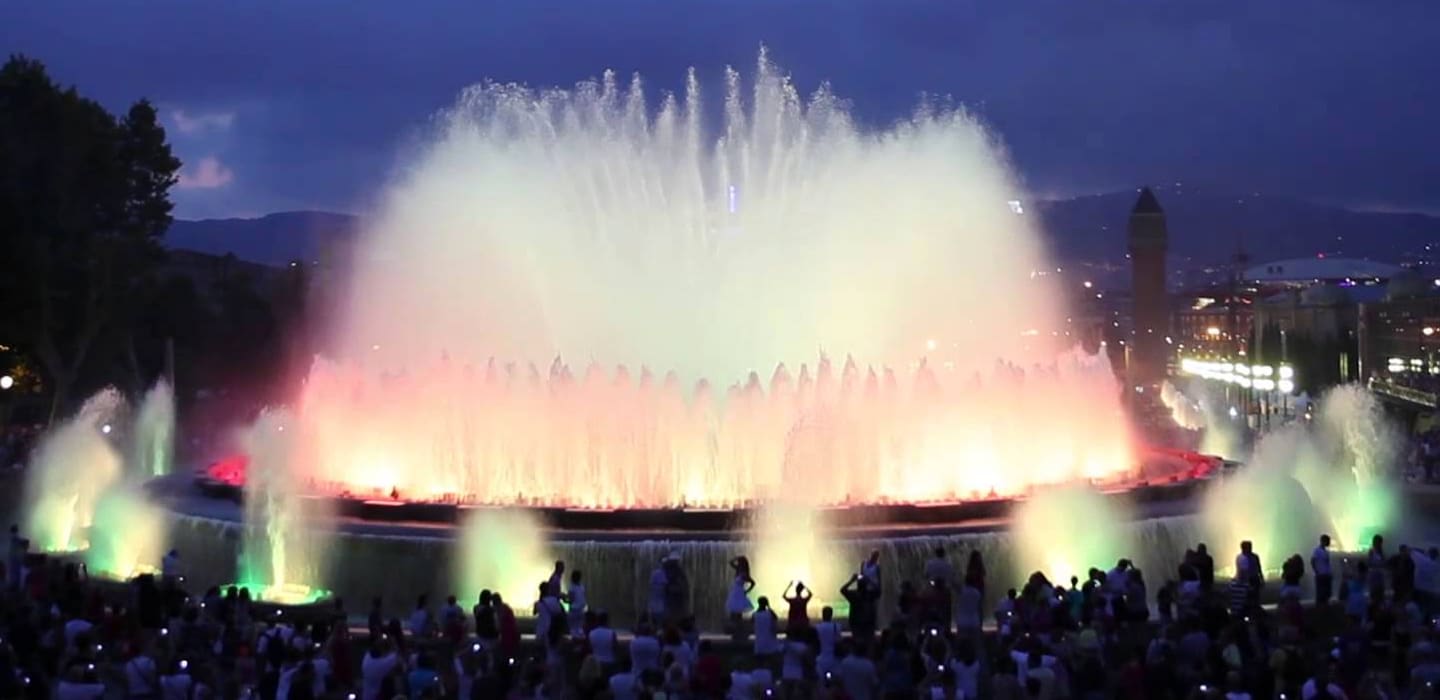

La Pedrera
Casa Milà, better known as La Pedrera (Catalan for ‘The Quarry’), is a building designed by the Catalan architect Antoni Gaudí and built in the years 1906–1910 (officially completed 1912). It is part of the UNESCO World Heritage Site “Works of Antoni Gaudí”.
This hallucinatory, undulating beast is yet another madcap Gaudi masterpiece, built between 1905 and 1910 as a combined apartment and office block. In spite of appearances, the building is coated in a layer of stone rather than built of it. The wave effect is emphasized by elaborate wrought-iron balconies.
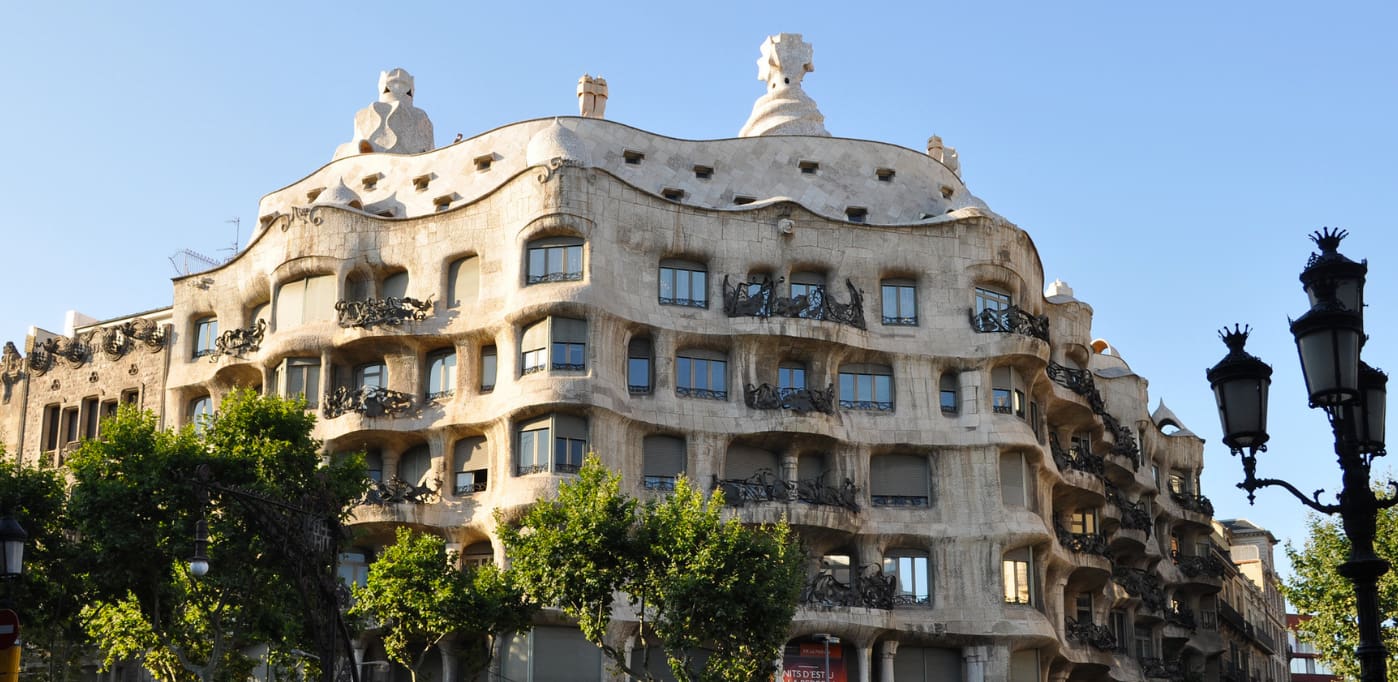

Arc de Triomf
This beautiful arch was built for the 1888 Universal Exposition, which took place at the Parc de la Ciutadella. The Arc de Triomf, situated at the end of a wide promenade, served as the exposition’s main entrance.
The design by Josep Vilaseca i Casanovas stands out from other well-known arches – in particular the Arc de Triomf in Paris – by its colorful brickwork in mudéjar style, a style which has its origins in Moorish architecture. The arch is decorated with stone carvings. The front frieze by Josep Reynés shows the city of Barcelona welcoming visitors. The other side, designed by Josep Llimona shows a prize-giving ceremony.
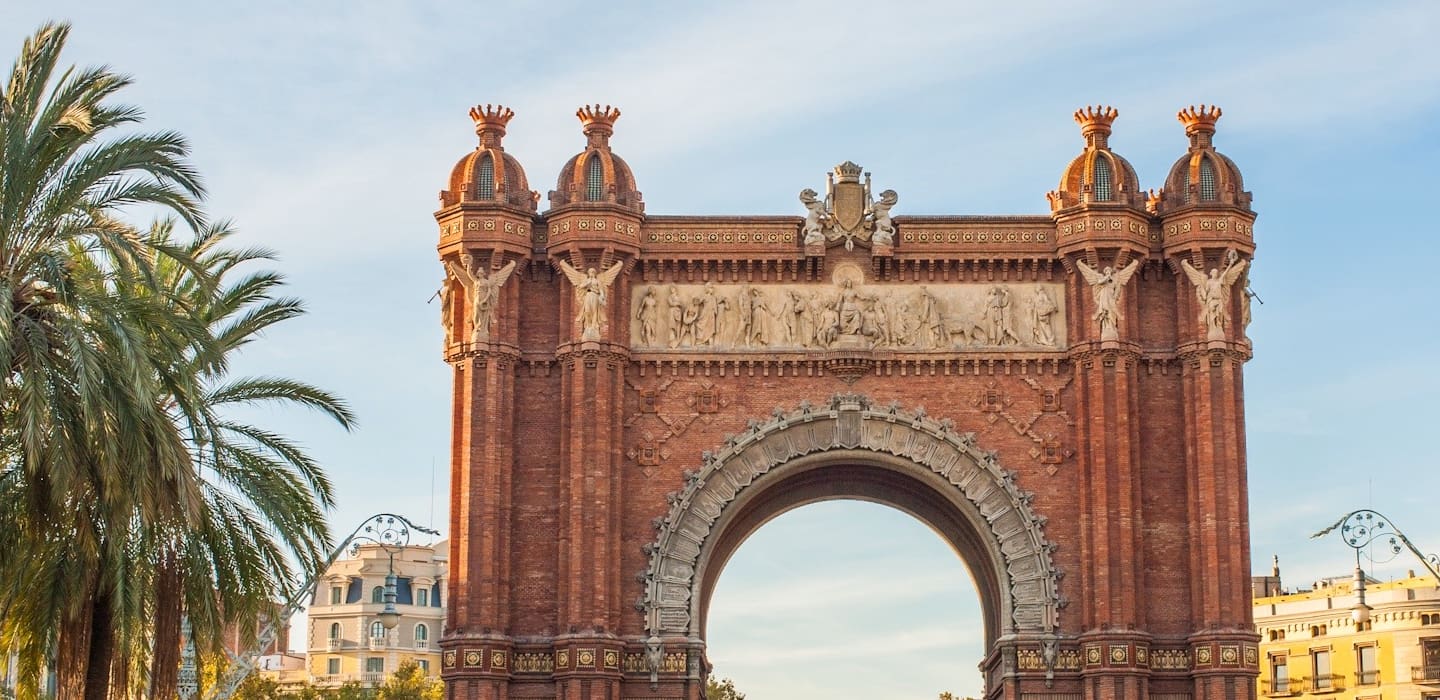

FC Barcelona
The Camp Nou Catalan for “new field”. The stadium has been the home of FC Barcelona since its construction in 1957. It is a UEFA 5-star rated stadium, and has hosted numerous international matches at senior level, and UEFA Champions League finals, the most recent being in 1999. It has a capacity of 98,772, making it the largest stadium in Europe.
It was designed by architects Francesc Mitjans-Miró, Lorenzo García Barbon and Josep Soteras Mauri.
The stadium also houses the most visited museum in Catalonia, El Museu del Barça, which receives about 1,200,000 visits per year. The museum was inaugurated in 1984 under the presidence of Josep Lluís Nuñez. The museum shows 1,420 pieces about FC Barcelona’s history, of which 420 are trophies.


Estadi Olimpic
First opened in 1929, the 65,000-capacity stadium was given a complete overhaul for the 1992 Olympics. The stadium was designed by architect Pere Domènech. The location is on Montjuic hill which overlooks Barcelona from the south of the city. You enter from the northern end, in the shadow of the dish in which the Olympic flame burned.
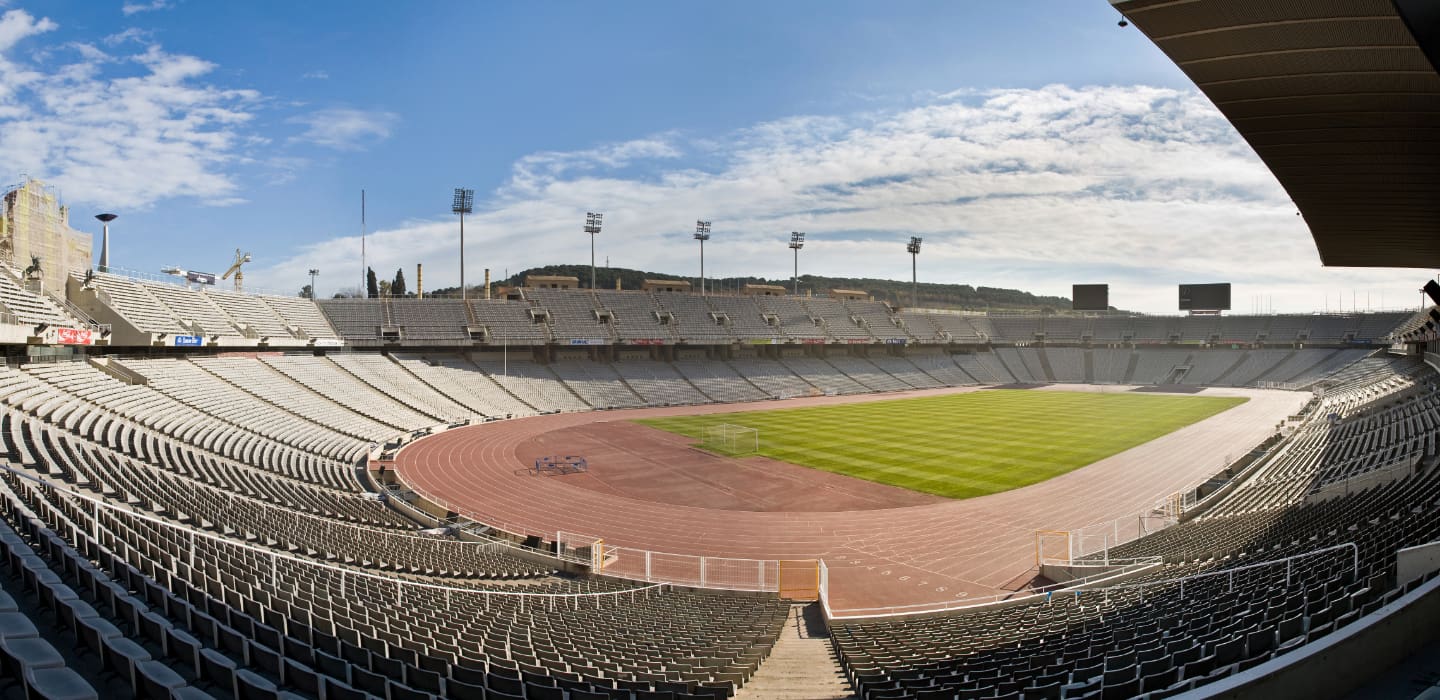

Montserrat
Montserrat is a mountain near Barcelona, in Catalonia, in Spain. It is the site of a Benedictine abbey, Santa Maria de Montserrat, which hosts the Virgin of Montserrat sanctuary and which is identified by some with the location of the Holy Grail in Arthurian myth.
“Montserrat” literally means “jagged (serrated) mountain” in Catalan. It describes the peculiar aspect of the rock formation, which is visible from a great distance. The mountain is composed of strikingly pink conglomerate, a form of sedimentary rock, popular with climbers.
Shimmering bizarrely in the distance as you drive the C-16 toll road between Terrassa and Manresa is the emblematic mountain range of Catalonia, Montserrat (Serrated Mountain).
Lying 50km northwest of Barcelona, the serried ranks of wind-and rain-whipped rock pillars (reaching a height of 1236m) were formed from a conglomeration of limestone, pebbles and sand that once lay beneath the sea. With the historic Benedictine range’s flank, it makes a great outing from Barcelona.
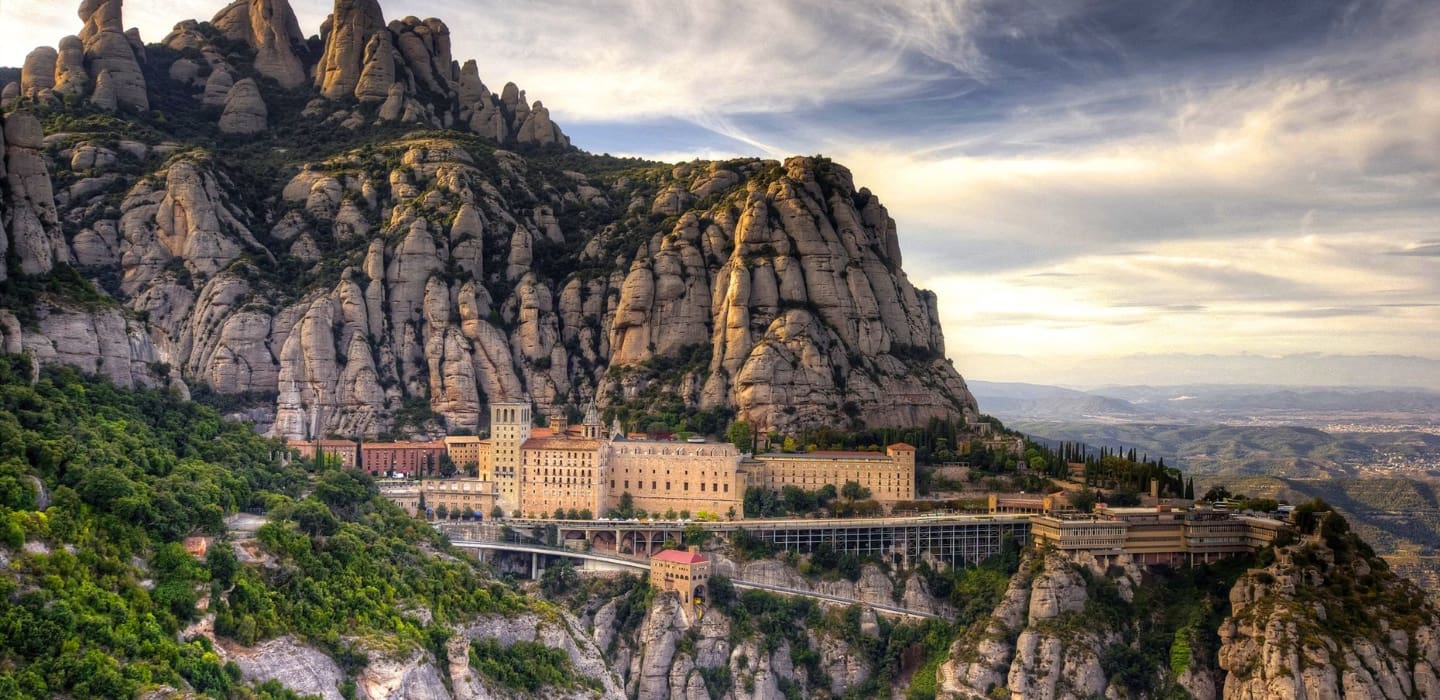

Poble Espanyol
The Poble Espanyol is an open-air architectural museum, located on the mountain of Montjuic. In total, the town was built in 13 months, for the exhibition in 1929, it was not demolished and was kept open as a museum. Today you can enjoy this Spanish Village which is both a cheesy souvenir-hunters’ haunt and an intriguing scrapbook of Spanish architecture. At night the restaurants, bars and especially the discos become a lively corner of Barcelona’s nightlife.
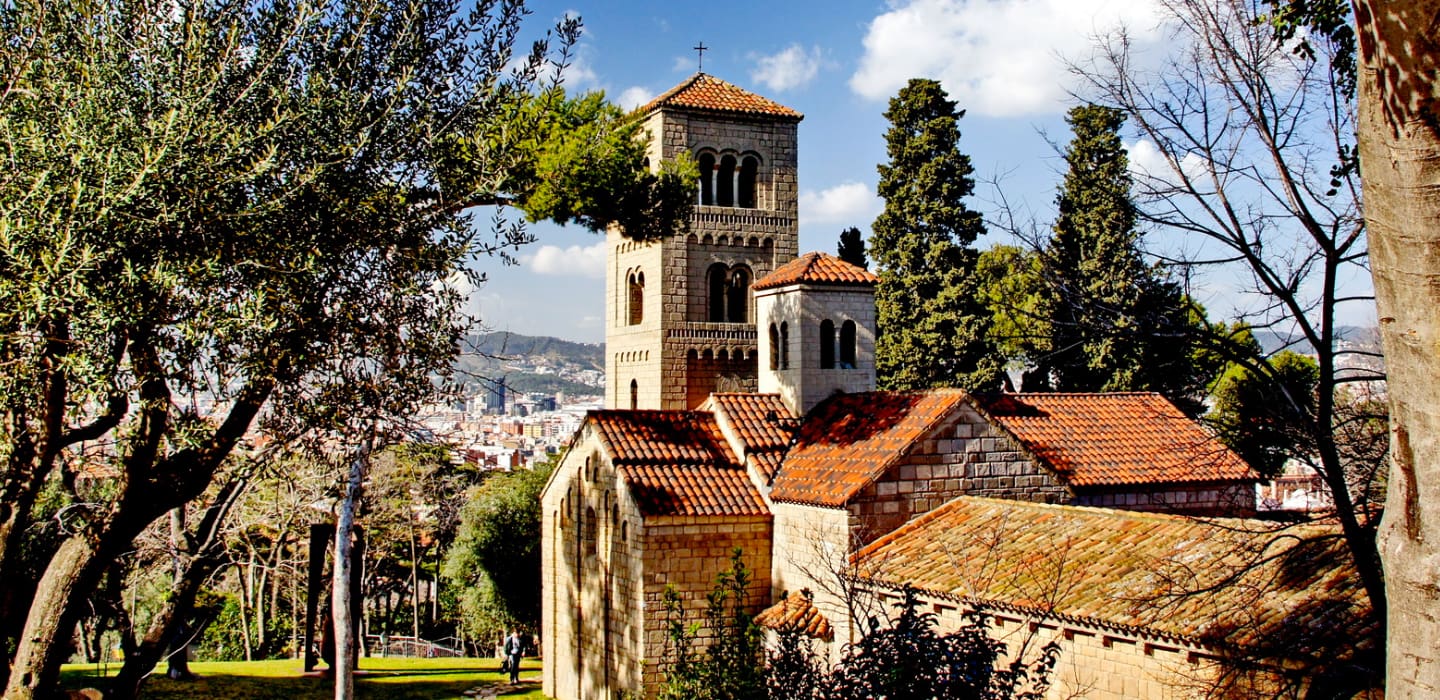

Port Vell
Barcelona’s old port at the bottom of La Rambla, once such an eyesore that it caused public protests, has been transformed beyond recognition since the 1980s. Abandoned warehouses and general junk are a distant memory, replaced by chic shopping, harbourside munching, movies on the sea, discos and Irish pubs, parking for yachts and a huge aquarium.
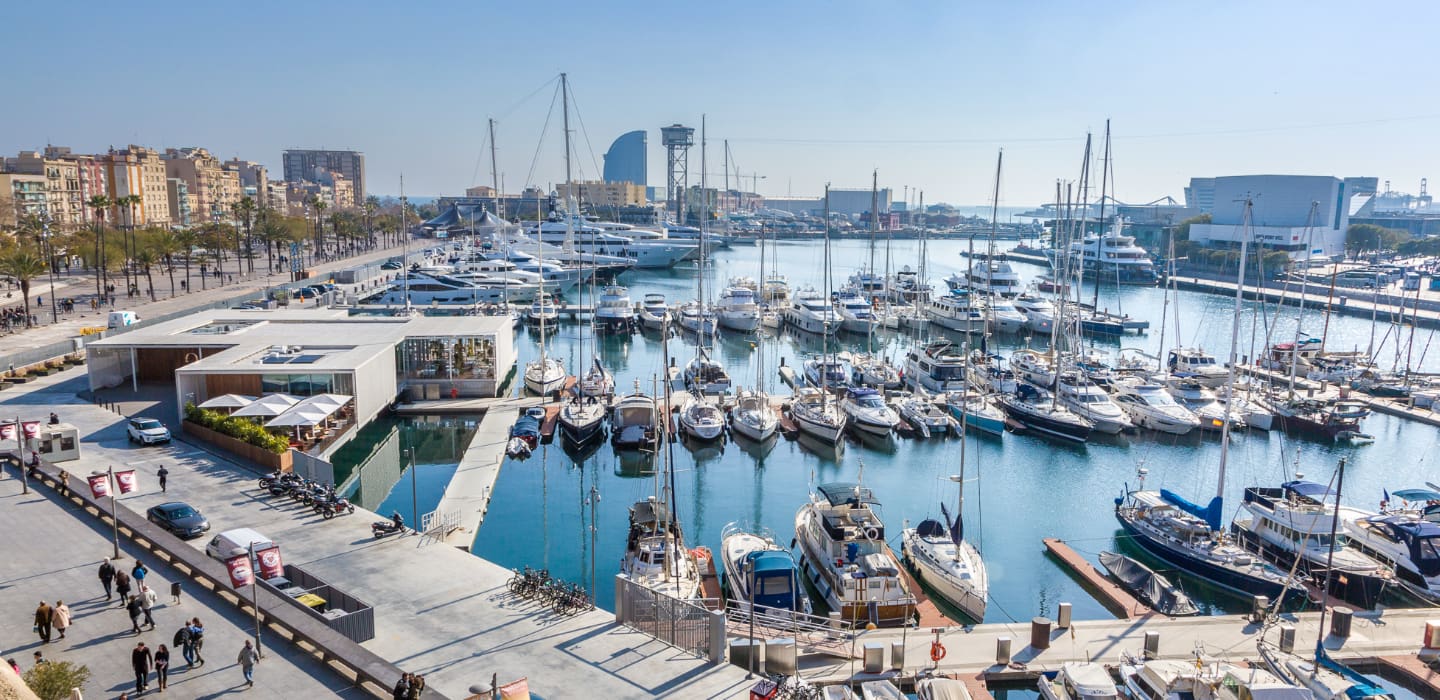

Pavello
The Barcelona Pavilion, a work emblematic of the Modern Movement, has been exhaustively studied and interpreted as well as having inspired the oeuvre of several generations of architects. It was designed by Ludwig Mies van der Rohe (1886-1969) as the German national pavilion for the 1929 Barcelona International Exhibition. Built from glass, travertine and different kinds of marble, the Pavilion was conceived to accommodate the official reception presided over by King Alphonso XIII of Spain along with the German authorities. After the closure of the Exhibition, the Pavilion was disassembled in 1930. As time went by, it became a key point of reference not only in Mies van der Rohe’s own career but also in twentieth-century architecture as a whole. Given the significance and reputation of the Pavilion, thoughts turned towards its possible reconstruction. In 1980 Oriol Bohigas, as head of the Urban Planning Department at the Barcelona City Council, set the project in motion, designating architects Ignasi de Solà-Morales, Cristian Cirici and Fernando Ramos to research, design and supervise the reconstruction of the Pavilion. Work began in 1983 and the new building was opened on its original site in 1986.


El Raval
El Raval is a barrio in Ciutat Vella district of Barcelona. The neighborhood is also known as Barri Xino, meaning “Chinatown.” El Raval is one of the two historical neighborhoods that border the Rambla (the other being the Barri Gòtic). El Raval is also becoming one of the hippest up-and-coming neighborhoods of Barcelona where many artists live and work. It is home to many bars, restaurants, and night spots.
Long one of the most rough-and-tumble parts of Barcelona, El Raval is becoming so hip in a grungy, inner-city way that they’ve even invented a verb for rambling around El Raval – ravalejar. El Raval has had a chequered history. Its bottom half is better known as the Barri Xinès, a seedy red-light zone that even today, after decades of efforts to clean the area up, retains a touch of its dodgy feel.
« If ‘Las Ramblas’ is the tracks, Raval is the wrong side of them. It’s everything decribed by the Spanish word « chungo » and the English word « dodgy ».
« It is non-stop, alive and lowdown dirty realnin way that a thousand ‘urban regeneration’ projects could never reproduce.


Palau
The Palau de la Música Catalana was built between 1905 and 1908 by the architect Lluís Domènech i Montaner as a home for the Orfeó Català, financed by popular subscription. The Palau de la Música Catalana is an architectural jewel of Catalan Art Nouveau, the only concert venue in this style to be listed as a World Heritage Site by UNESCO (4th December 1997), which today represents an essential landmark in the cultural and social life of Catalonia. Moreover it represents a symbolic emotional heritage for a whole people who identify with its history. The building is designed around a central metal structure covered in glass, which exploits natural light to make the make Domènech i Montaner’s masterpiece into a magical music box which brings together all the decorative arts: sculpture, mosaic, stained glass and ironwork.


